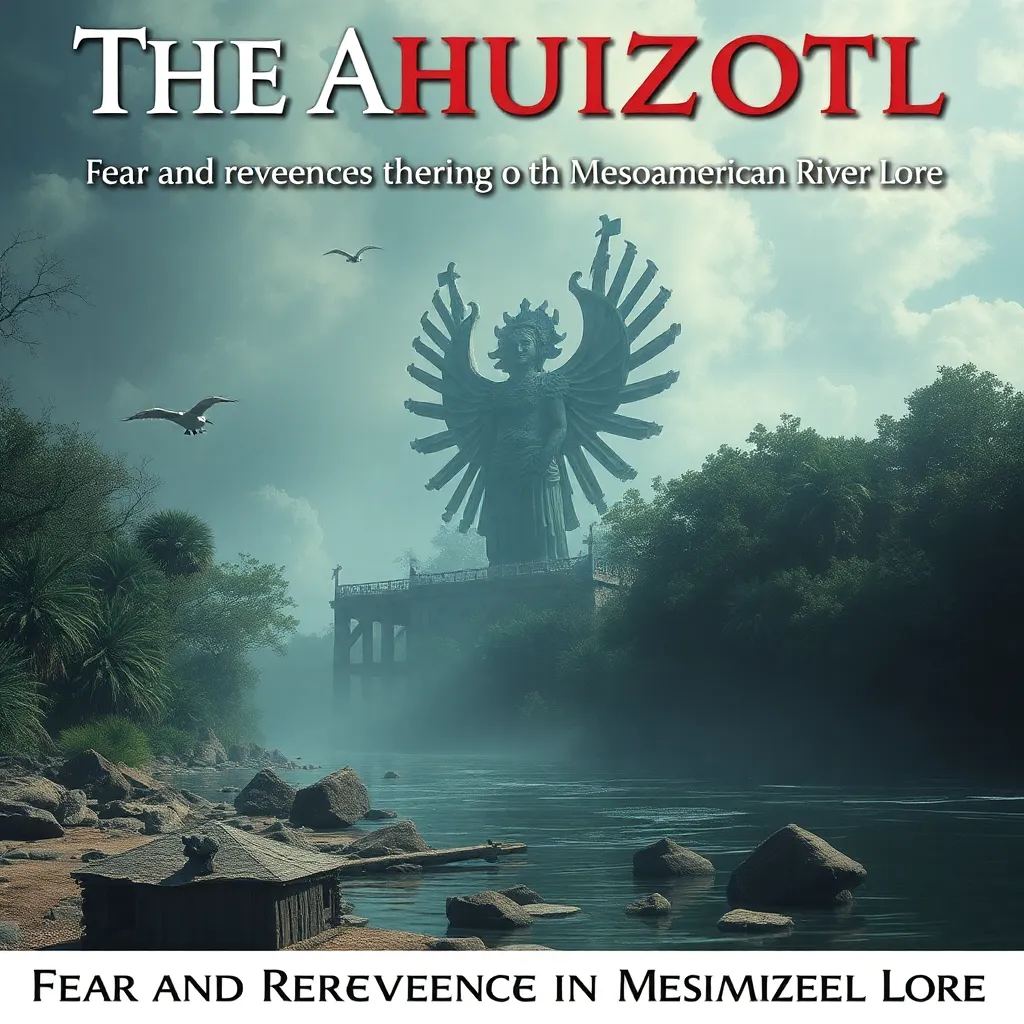The Ahuizotl: Fear and Reverence in Mesoamerican River Lore
I. Introduction
The Ahuizotl is a fascinating and complex figure in Mesoamerican mythology, particularly revered and feared in the Aztec culture. This creature, often depicted as a dog-like entity with a hand on its tail, embodies the dual nature of water as both a life-giving source and a perilous force. Understanding the Ahuizotl requires an appreciation of the river’s profound significance in Mesoamerican culture, where rivers were not only vital for sustenance but also held deep spiritual meaning.
This article aims to explore the dual nature of the Ahuizotl, shedding light on its historical roots, physical characteristics, cultural significance, and enduring legacy in contemporary society.
II. Historical Context
The myth of the Ahuizotl has its origins in the rich tapestry of Aztec and other Mesoamerican cultures. The earliest references to this creature can be traced back to pre-Columbian times, where it was spoken of in both oral traditions and early written accounts by Spanish chroniclers.
Geography played a crucial role in shaping the portrayal of the Ahuizotl. Rivers and lakes were central to life in Mesoamerica, and the Ahuizotl was often seen as a guardian of these waters, reflecting the region’s deep connection to its aquatic environments.
III. Physical Characteristics and Attributes
The Ahuizotl is typically described as a creature resembling a dog or a small wolf, with distinctive features that set it apart from other animals. Its most notable characteristics include:
- A long, sleek body covered in dark fur
- A hand at the end of its tail, which it uses to lure victims
- Large, expressive eyes that are said to gleam in the water
The symbolic meanings of these features are significant. The hand on its tail represents the deceptive nature of the Ahuizotl, as it uses this appendage to pull unsuspecting individuals into the depths of the river. The eyes symbolize watchfulness and the omnipresence of the Ahuizotl in the waterways.
In comparison to other mythical creatures in global folklore, the Ahuizotl bears similarities to entities such as the Nuckelavee of Scottish mythology and the African Mokele-Mbembe, both of which are also associated with water and exhibit dual aspects of danger and protection.
IV. The Ahuizotl in Mesoamerican Cosmology
Within Mesoamerican cosmology, the Ahuizotl occupies a unique position among river gods and spirits. It serves not only as a fearsome entity but also as a protector of aquatic resources, embodying the reverence that ancient cultures held for the rivers that sustained them.
The relationship between the Ahuizotl and agriculture is profound, as water is essential for farming in Mesoamerica. The Ahuizotl was often invoked in rituals aimed at ensuring bountiful harvests and protecting crops from drought.
Cultural rituals associated with the Ahuizotl included offerings and ceremonies conducted at riverbanks, where adherents would seek the creature’s favor to ensure safe passage and abundant resources.
V. Tales and Legends
Numerous tales and legends feature the Ahuizotl, illustrating its complex nature. One of the most notable stories recounts how a fisherman, lured by the creature’s hand, was nearly pulled into the water but was saved by his quick thinking and knowledge of the river.
Regional variations of the Ahuizotl legend exist throughout Mesoamerica, with some cultures viewing it as a trickster figure, while others see it strictly as a malevolent spirit. Common themes in these stories often include:
- The consequences of disrespecting nature
- The importance of knowledge and awareness of one’s environment
- The balance between fear and respect in relationships with natural forces
VI. Fear and Reverence: The Dual Nature of the Ahuizotl
The Ahuizotl embodies a fascinating dichotomy of fear and reverence. For river travelers and fishermen, the creature was a source of dread, representing the dangers posed by the unpredictable waters. Many believed that encountering the Ahuizotl could lead to fatal consequences if proper respect was not shown.
Conversely, the Ahuizotl was also revered as a guardian of the waters. Many Mesoamericans recognized the importance of maintaining a harmonious relationship with nature, and the Ahuizotl was seen as a reminder of the power and sanctity of water.
This fine line between fear and respect reflects broader Mesoamerican beliefs, where nature was both a nurturing and destructive force, deserving of both admiration and caution.
VII. The Ahuizotl in Modern Culture
In contemporary culture, the Ahuizotl continues to capture the imagination of artists, writers, and scholars. It has been represented in various forms of media, including literature, film, and visual arts, often symbolizing the themes of nature’s duality and the interplay between humanity and the environment.
There has been a resurgence of interest in Mesoamerican mythology, as people seek to reconnect with indigenous cultures and their narratives. The Ahuizotl serves as a potent symbol of cultural identity, reflecting the rich heritage of Mesoamerican civilizations.
The impact of the Ahuizotl on cultural identity and heritage is significant, reminding contemporary society of the importance of preserving indigenous mythologies and the lessons they convey about nature and coexistence.
VIII. Conclusion
In summary, the Ahuizotl is a multifaceted figure that embodies the complexities of fear and reverence in Mesoamerican river lore. Through its historical roots, symbolic attributes, and cultural significance, we gain insight into the relationship between humans and the natural world in ancient civilizations.
The enduring legacy of the Ahuizotl in cultural memory highlights the importance of preserving indigenous mythologies and their meanings, reminding us of the value of understanding our past as we navigate the challenges of the present.



